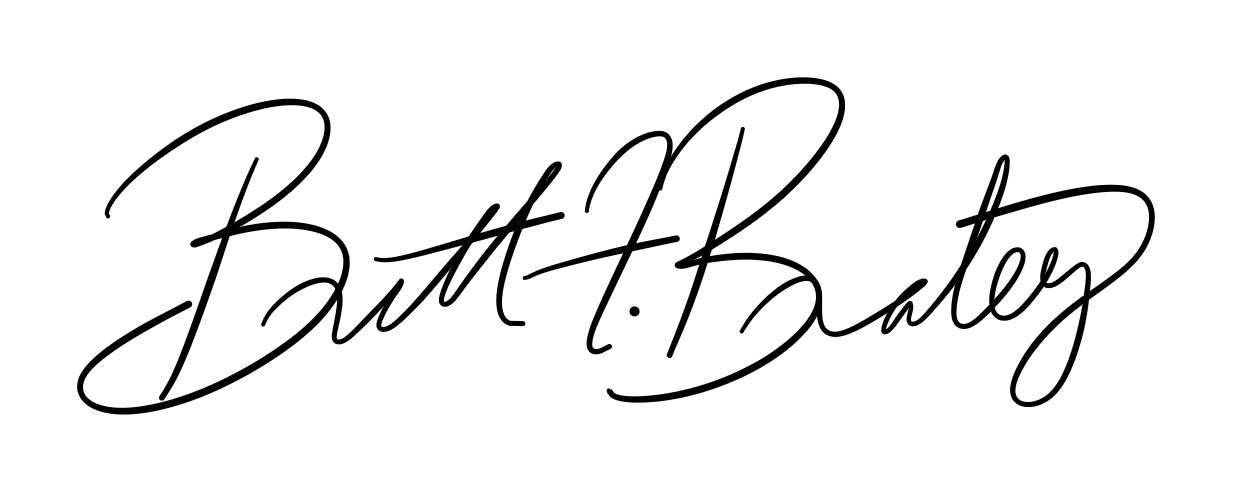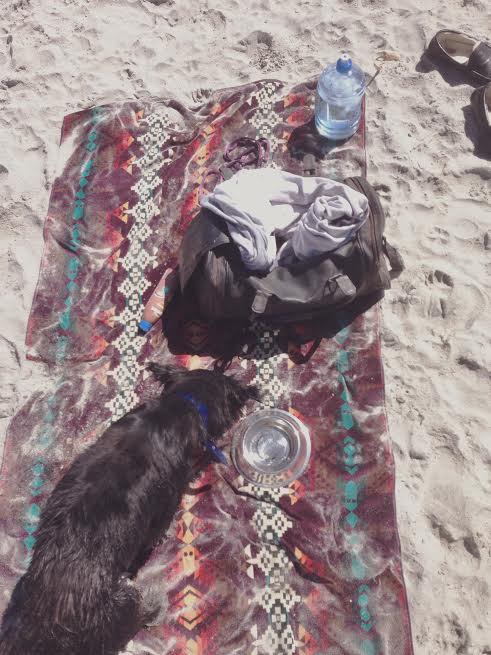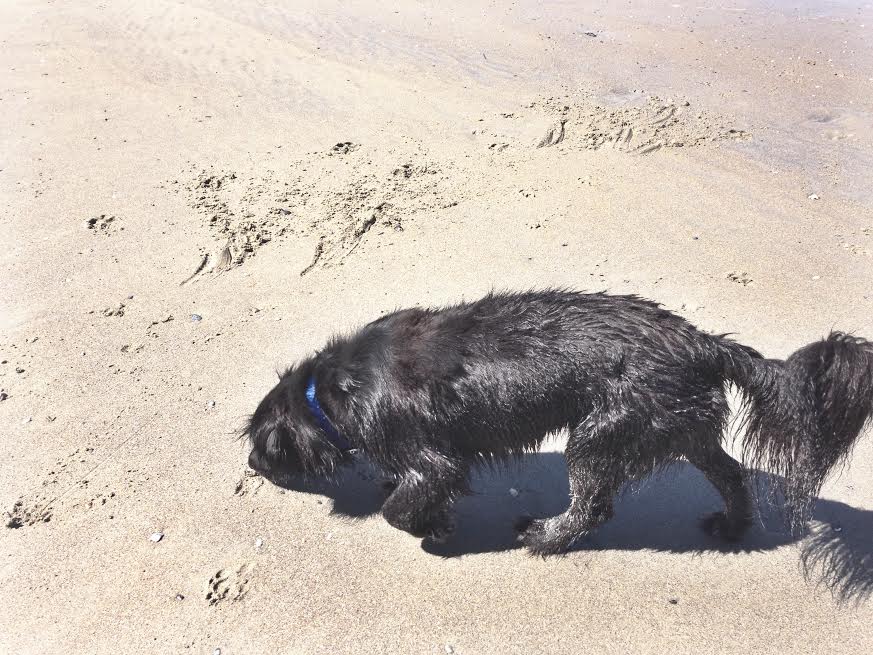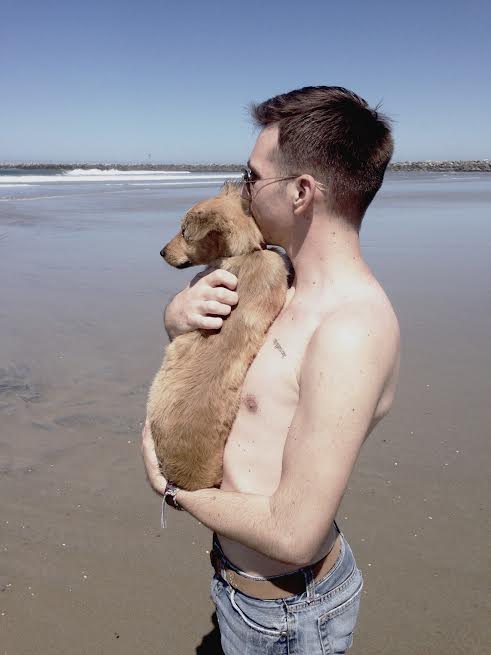Your Custom Text Here
A Giveaway
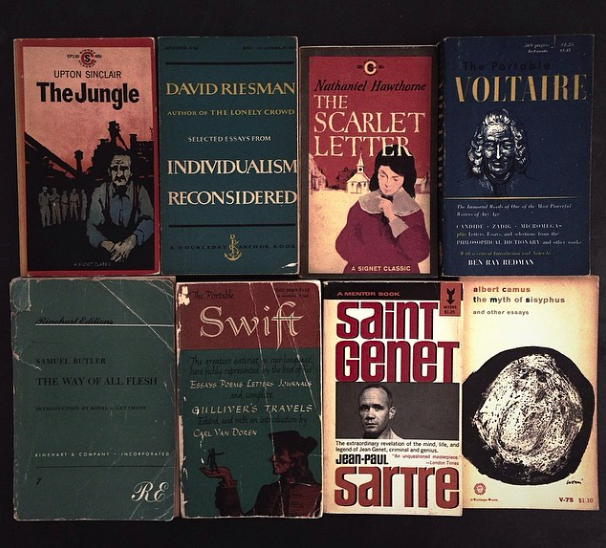 I drove to Phoenix on my days off. I drove to Phoenix and relaxed in the sunlight. Life started when i got back, when I picked up the dogs from the sitter, did some grocery shopping, went to Goodwill for some props and housewares, when I went to the library to pick up some books.
I drove to Phoenix on my days off. I drove to Phoenix and relaxed in the sunlight. Life started when i got back, when I picked up the dogs from the sitter, did some grocery shopping, went to Goodwill for some props and housewares, when I went to the library to pick up some books.
And there was a widow in florals, sitting on the concrete steps with a paper grocer's bag at her side. I smiled at her, and the crinkles around her eyes twitched a response. I was greasy from the five hour drive, a warn red hat and some cut-off shorts. I carried a bundle of books under my arm and on the way out she stopped me. She told me these were her husbands books, who died at 79. She told me the books smelled in the closet and she needed to make some room. She told me they were free, to take them and "be as smart as her husband was."
I took the bag and now I'm sharing them with you! Whoever would like one of these amazing collectibles sent to them, let me know and i'll send it your way. I want to continue the act of kindness this widow showed me, to share this gift with you all. Just let me know, be my friend, and be as smart as her husband was.
Tax Day, Bread, and a Flood Confessional.
The first time I brought Nolan to my parents' converted farmhouse there was a summer flood. A "flash flood". A panicked flood, punctuated by my father's cries for more wood to divert the deluge, myself knee-deep in mud. It was going to happen, we knew. We saw the signs, the cloud formations and the way that a storm lays sticky on your forearm hair. It was going to happen and the cable went out, so there was no distracting us from the inevitable. We sat in our lawn chairs, propped on the pool deck, and waited for the first growls of a summer downpour. And when it did come, as it always did, the one loan tree, a half-formed walnut tree, was the first to tell us. The hollow green fruits blew off in groups, committing suicide and cracking their skulls as they came down on the chicken coop's roof. It warned us to get inside, to seek shelter, to not be as foolish as her children were. And so we took heed and waited. Waited with the door open, the windows and blinds open, our eyes open for any leaks.
And then it broke. The annual flood. A jealous god, a baptismal rain to heal the souls of our Appalachian youth. It didn't work too well, though, because in the candlelight of the blackout, Nolan and I had pure and quiet sex to the sound of the rain on the window.
The storm was a homecoming, a way to know you've arrived and the reason you want to leave. The two-by-fours didn't always work, the basement would get flooded, the linoleum of the kitchen floors would be slick and you would fall. The family dog, Jack, would howl to the thunder gods, begging for an end. He hasn't been around long enough to know that they hardly ever listened (or maybe they did and I should have howled to get their attention). But it was all over soon, it was all over in an hour's time and it was a two-day affair to clean up the mess.
The chicken wire broke and the hens got out. The gravel settled at the bottom of the pool, along with some screws and a bees nest. A broken branch was wedged in the tire swing on that old walnut tree. All footprints in the dirt were erased. The remnants of the storm overpowered the effigies of our presence there, in that old farmhouse. It was reparable, of course it was reparable, but it was hard work to keep up the memories, the images. It was a two-day affair to clean up the mess.
It was a two-day affair to clean up the mess, but instead we baked bread. We baked it by hand, we kneaded it between shifts of picking up the yard. We left it next to a space heater we had going to help dry up the floor better. It was a basic bread, crusty and yeasty. It hit all the senses. We dunked it in microwaved chili my mom had made and subsequently frozen the week before.
I don't forget much, and I won't forget that.
I won't forget the instant sensation of family and warmth the bread provided. It was a inescapable reality of life that the flood would come again and again. It would never stop, and you just had to adapt. You just had to knead the bread in intervals to have something to look forward to when your back ached and your eyes grew tired, because that was inevitable too.
And so are taxes.
This is my first year filing them by myself, having always had the help of my father (an expert, using the flood to his advantage). But it was a growing experience, something I and to face. But it gripped me with fear, the thought of having to make decisions, file this form, fill in that box. There was no buffer of culpability, no way to blame someone else. I was unemployed for six months, a student prior to that. I had no money to give; I got none in return.
After signing up for the free web service, going through the wizard and trying to find some way to meander through it without breaking down and calling my dad to just do it for me, I took a break. A hunger-induced break. It's facing realities like taxes, like floods where memories can be lost, like uncertainties that make you the most hungry, when you crave your momma the most. But she was 3,000 miles away and it was just taxes, but I still made bread anyway.
And for every period it needed to rise, I took a break, cleaned a dish, took another break, set the table. I ended up making two loaves (when I realized the first one had to set for the requisite 12 hours first). Both came out perfect. Both reminded me of home and were given out to Nolan as I told him about my day, how much my refund was, and we reminisced over that old farmhouse one more time.
______________________________________
Laura Calder's Miracle Boule (x)
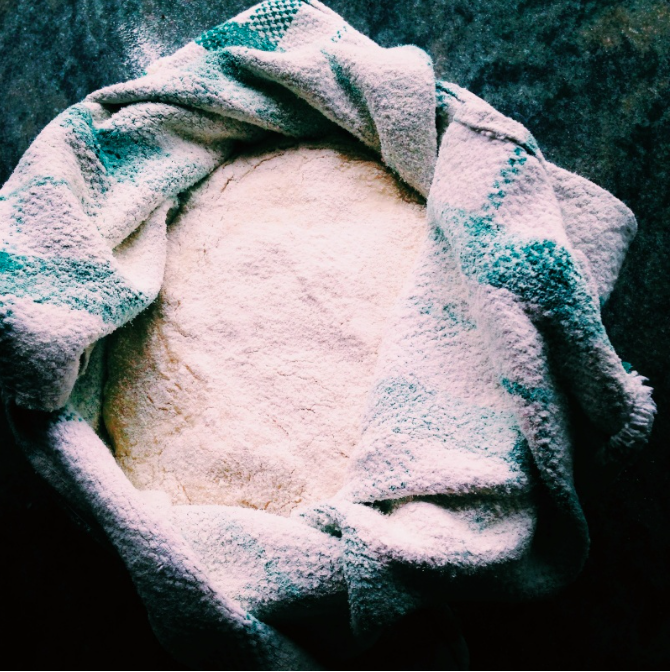
Laura Calder is the host of The Cooking Channel's French Food at Home and a lovely chef (who has a new cookbook out!). I came across this recipe a few months ago and have used it ever since I got my cocotte. What a lovely, easy bread that takes less time than you'd think (it's not called a miracle for nothin'!). You can find her recipe above, as I made no changes to her original recipe to share.
Cheddar-Jalapeño Yeasted Corn Bread
I adore this recipe and I am kind of proud that I did most of it without any reference. I think that's the mark of growth (for me at least)--setting a vision and then actualizing it on your own know-how. My idea behind this recipe was to make a more versatile cornbread that could be used as more than just a side. Using cornmeal against a flour ratio and yeast, I discovered a moist, rich, and spicy (if using jalapeños) bread that was great for sandwiches, as a side, or even a grilled cheese! Here is the recipe (makes two loaves):
Ingredients:
- 2 sachets of 1/4 oz. active dry yeast
- 1/2 cup warm water
- 3/4 cup milk (I actually used some leftover heavy whipping cream for an added level of moisture and light sweetness)
- 1/3 cup sugar
- 1/3 cup butter, melted
- 1 egg
- 3/4 cup cornmeal
- 1 teaspoon salt
- 3 1/2 to 4 cups all-purpose flour
- 1 cup cheddar cheese, shredded
- 8-12 jalapeños chips, diced
Directions:
- In a large bowl, dissolve yeast in warm water. When dissolved, add milk, sugar, butter, egg, cornmeal, and about 1 1/2 cups flour (to start). Beat with hand mixer until smooth. As you start to see a wet dough come together, stir in enough of the remaining flour to form a soft dough.
- Turn onto a floured surface and knead for a few minutes until smooth and the gluten activates, making it elastic and spongy. Place into a greased bowl to allow to rise (turn dough over once to allow top to get a little grease on it as well). Cover with a towel and allow to double, about 45 minutes.
- Before punching down, add cheese and jalapeños and gently fold into dough. Divide into two loaves and put into greased loaf pans (or cast-iron ones, which I preferred). Cover and let double again, about 30 minutes. Preheat over as it rises to 350 degrees.
- Bake for 35-40 minutes, let cool briefly before serving warm.
Strawberry-Lemon Shortbread "I'm Sorry" Cookies
These cookies were a peace-offering. A way in which I could say, "It'll be okay. Just give it time." without feeling like the millionth time I've had to say it. They were organic-made, from memory and what was left in the refrigerator. I hope these can bring happiness to your loved one, too.
Ingredients:
For the shortbread (yields one dozen):
- 3/8 cup butter, room-temperature (more if flour mixture becomes too dry)
- 1/2 cup sugar
- 1/2 teaspoon vanilla
- 1 3/4 cup flour
- 1/4 salt
- Juice and zest of half a large lemon
For the strawberry-lemon glaze:
- 3 hulled strawberries, blended
- Juice and zest of half of large lemon
- 1/2 cup confectioner's sugar (plus more for consistency preference)
Directions:
- Preheat oven to 350 and prepare cookie sheet
- Beat butter and sugar until combined
- Add vanilla and lemon components
- Sift flour and salt over butter mixture
- Mix on low until dough forms (my flour always absorbs more liquid, so I had to add about three more tablespoons of butter to get a dough to form)
- Wrap and chill for thirty minutes
- After thirty minutes has expired, unwrap dough and roll out onto floured surface to about 1/2 inch thick
- Cut into desired shapes
- Bake for 20-25 minutes until edges are golden brown
- Drizzle with glaze and give to someone you love!
The glaze is prepared by blending or macerating three strawberries and sifting this into a mixture of lemon juice, zest, and confectioner's sugar, stirred to desired consistency.
A Very Necessary Weekend
Weekends are moveable feasts for me, working in the hospitality industry. For the last six months or so, every Tuesday and Wednesday have been my respective Saturdays and Sundays. It was nice to grocery shop when there wasn't a crowd around the red-ticketed clearance sections, the checkout cashier and the turning lanes both empty save for a car or two. It was a nice routine while it lasted, a steady stream of relaxing days spent with chores and without Nolan (who would work on the days I had off).
But weekdays are pointless when you want to make plans. No one was ever doing anything, everyone was always busy, except for Murphy of course. It got boring--quick.
I'm in a transitional period with my job, going from sales into the administration department (more steady pay, more growth with the company), and so I have had most of the week since Thursday off. I finally got a weekend, a real-life one! To commemorate the occasion, Nolan and I have been spending much-needed time together, enjoying each other again, stealing kisses in the twilight of these San Diego nights, and discovering who we have become this Spring.
On Saturday, we woke up with promise of a good day, and it delivered us well. There is a flea market that I have wanted to go to for a while. Back home, my parents tend to a small table of good from our house, silly trinkets and collected country crafts my mother sells for twenty-five cents on Sundays. I wanted that feeling of home, that welcomeness of collecting unnecessary goods for the sake of having them in the house. We went to the swap meet and spent $37 dollars. We went to the swap meet and looked at old Members Only jackets, old vinyls and books, hand-woven blankets and tattered bibles sitting in a cardboard box. It was exactly what was expected, it was everything it needed to be.
We left with a lemonade (the "ballpark" kind, as Nolan calls it) and a bag of kettle corn. My mouth still burns from a cappuccino I had that morning, and the salt and sour formed a small canker.
For three hours we napped when we got home, and forgot the troubles we create for ourselves.
Living in that same euphoria, the promise of promises, we took the dogs to the beach yesterday. It was a beautiful day (and today's even more beautiful) and we wanted to share the opportunity for sunlight with Murphy and Elsa (it was her first time). We woke up bleary-eyed and the decision on our minds and left without even a comb through our hair. We packed a bag with granola, a Pendleton beach towel Nolan had gotten me for Christmas, and water for the puppies. We left in twenty minutes and stayed for an hour.
There is something outside of the linear fashion of time when you go to the beach. It's the crashing waves that meander at their own pace, the sun at high-noon and nothing else to tell time with. It's the way that both man and beast are enthralled at the crashing sounds, the deep horizon of grey-blue water and the equally cavernous, cloudless grey-blue skies. It's peaceful and nonthreatening. It's relaxing and spiritual to live in this golden state.
And you could feel the sensation come over Elsa and Murphy. He ran up and down the shore, chasing gulls and flies that buzzed around the bulbous seaweed. He chased me and I chased him back, but we always came back to Nolan and Elsa, who sat sleepily on the beach towel.
And the rest of the day was spent in relaxed silence, peaceful quiet. A Sunday that I had craved for a while. It reminded me why we moved to far away, it reminded me to stay grateful. I think I needed reminded, anyway.
PS, new recipes coming soon!
Mornings and Rituals (and donuts!)
I've always been a morning person, and I enjoy that about myself. I think it all began when I would sleep in my parents' bed and they would wake up for work, leaving me sprawled in bed and aching for attention. I think it's the promise of a new day, a new opportunity to make decisions that either enhance my life or fuck it all up. I like that, the sublime wonderment of choice of indecision. How they intermingle to create discontinuation in the plans we make ourselves as children. It's hope, it's nascent disregard for obligations. It's a half hour of freedom before hot showers and coffee that's cold by the time you're out of traffic. This week has been especially enjoyable for mornings because I've been sleeping in the living room, under fleece blankets from Christmas, under an I Love Lucy woven blanket, under a quilt that was hand-stitched by a great-aunt named Naomi, called Noni. Everything is gifted, nothing bought. I'm sleeping in the living room because of Elsa, the tiniest member of the family. I'm sleeping with her cradled in my arm, curled in a ball to keep warm and comforted by my drumming heartbeat. They say a ticking watch reminds puppies of their mothers, and so I keep one on all night to help her sleep. And in the late, dark, ash moon midnights of this April's beckoning, that sigh of puppy-breath and the thunderous metronome of timekeeping are my only companions. The things that keep me warm and sane. I pray to the rhythmic god, a space-time confusion of faith and disaster.
And in the mornings, when it is cold and I'm too tired to press the coffeemaker button, I sit with a cradled puppy and my thoughts. I watch the sunlight thread through cloud eyes, I watch the birdsong swell up in the robin jays. I watch it from the bay window of our kitchen, through a tangle of dying tarragon leaves. I watch it until I can make the decision to keep going, to fulfill a prophecy unbeknownst to me. I brush the sleep from my eyes, have my morning coffee with cream and two sachets of sugar, stir it with a wooden rod.
And I eat one of these amazing donuts. And I know life is good, that life is doable. That it's all worth it.
___________________
Sweet Corn Donuts with Honey-Sugar Glaze (makes a dozen mini donuts)
Ingredients:
- 1 cup cornmeal
- 1 cup flour
- 1 Tablespoon baking powder
- 1/2 cup sugar
- 1/4 cup honey
- 2 Tablespoon applesauce
- 2 eggs
- 2 tablespoon butter, melted
Directions:
- Preheat oven to 400
- Prepare donut pan with cooking spray or butter
- Combine cornmeal, flour, baking powder, salt, and sugar in large mixing bowl
- In separate bowl or in liquid measuring cup, measure and mix all remaining ingredients
- Pour wet into dry, mix with rubber spatula (here, I refrigerated mine overnight and preferred it, as the liquid gets into the coarse cornmeal, but it is not necessary)
- Pour into pan 3/4 way full
- Bake 10-13 minutes, until browned and springy to the touch
- Glaze while warm (recipe below) and serve (they're so good warm, I microwaved mine back up after they cooled!)
(For the glaze: whip 2 TB room temperature butter, mix with 2 TB raw clover honey, spread on warmed donuts with butter knife. Dust with confectioner's sugar)
Banana Donuts with Hot Cocoa Glaze (makes one dozen)
Ingredients
- 1/4 cup butter, softened
- 1/4 cup applesauce
- 3/8 cup sugar
- 1 whole egg and 2 egg whites
- 1 1/3 cup flour
- 1 tablespoon lemon juice
- 1 teaspoon baking soda
- 2 overripe bananas, mashed
Directions
- Preheat oven to 350
- Grease donut pan
- Mix butter, applesauce, sugar, and eggs with hand mixer on high until blended
- Add flour, mix until blended
- Add juice, soda, and bananas (one at a time)
- Mix on high for two minutes. Mixture should be glossy
- Fill donut pan 3/4 way full with mixture
- Bake 8-11 minutes until browned and springy to touch
- All to cool before glazing (the "hot cocoa glaze" is 1-1-1 1/2 ratio of Hershey's cocoa powder, confectioner's sugar and heavy whipping cream)
I hope you enjoy these as much as I have!
